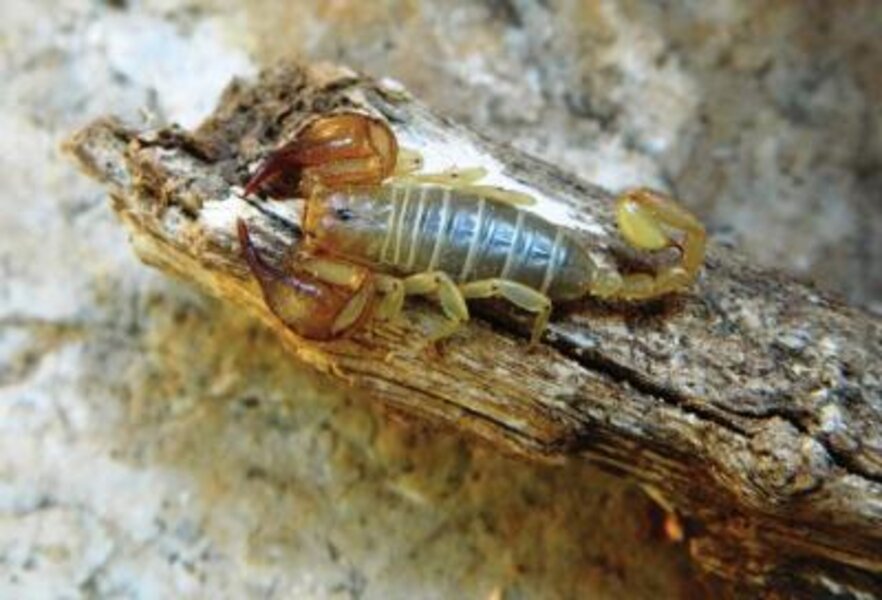New scorpion found in what was ancient Lycia fails to spit fire
Loading...
A team of Turkish and Italian scientists have announced the existence of a new species of scorpion in southwestern Turkey. The research, published in the journal ZooKeys, fine-tunes the taxonomic classification of the numerous species within the new scorpion's genus, each of which do stand-up jobs of masquerading as each other.
The scorpion, called Euscorpius lycius, is named for Lycia (LISH-ee-a), the ancient political region that once spanned southwestern Turkey’s Muğla and Antalya provinces. In a tale told in The Iliad, the area was also the mythical home of the Chimaera, a lion-goat-snake-being that happened to spit fire.
The Euscorpius lycius is less formidable – much less. The scorpion is the latest addition to the Euscorpius genus of scorpions, or “small wood scorpions,” first described in 1876. It joins a group of more than a dozen species found throughout Europe and Africa that are each no more that about two inches long and that range in color from dull light brown to faded red brown. Their sting is about as a harmful to humans as is a mosquito bite. None of them spit fire.
Five of these scorpion species live in Turkey, and the latest scorpion had hid within these species, the paper’s authors said. To tug the new species out of the group, the team of scientists had pulled 26 specimens out from under stones and off of garden walls around southwestern Turkey. The team then took a careful review of the tiny scorpions’ features for minute morphological clues that this was, in fact, a new species.
It’s possible that there are more species still hiding within the so far identified five species, but differentiating between species within this genus of little, dull-colored scorpions is a fraught effort, the authors said.
“Taxonomy of Euscorpius genus is complicated and still unresolved throughout its range,” the authors write, in the paper, noting that species within the genus exhibit “the same, or very similar, standard characters.”
“Additional morphological features that simplify the division between the species of the genus Euscorpius should be found,” the authors write, “but at the moment the only way to identify the various species is to combine a set of characters, primary and secondary, the area of origin and a certain number of specimens available.”
Splicing one species into two is common in zoology, and it is especially common when the animal, or animals, in question are as small as are members of the Euscorpius genus. There have been incidents, though, when even big – and cute – mammals have hidden themselves within broad taxonomic classifications.
In August, a team of scientists from three US museums announced that olingos had been hiding a separate species of teddy-bear-like mammals in their midst: the olinguitos. The announcement ended a decade long effort to piece through the evidence –a bright red pelt here, a grey pelt there – to show that one species was in fact two species.






